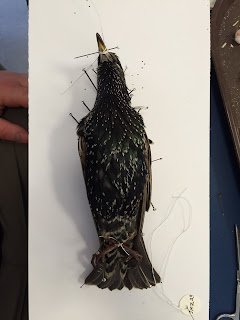I once posed a question on my blog asking biologists to tell me why they work with the species—or group of species—that they do. Is it because they are a model for understanding humans? or because of their interesting behavior, morphology, or adaptations? or maybe, you are just flat-out inexplicably drawn to them? Unscientifically adoring of your fascinating and sweet species. You watch them move in the wild, you know their tendencies, and how to tell individuals of the same species apart. You get a rush when you see something rare. You think about them all the time. We cannot deny that we are moved by the animal kingdom, yet I have been told in so many ways that it’s not typical or acceptable to bring these feelings to scientific inquiry. But I truly think it is artificial to pretend otherwise. Give me a break. I know what science is, and what it isn’t. I trust my measurements are not inaccurate because my eyes are blurry with tears. I can quantify something cute. And isn't knowing about something, wholly and deeply, the most comprehensive kind of love?
First, we blew gently on the ventral side of the tiny body so the feathers naturally parted. We slowly sliced into the starling flesh. We started in the middle of the chest. And worked our way towards the head. We stripped the flesh away from the skin on the inside of the breast and then wings and legs. We removed the guts. Then, we did something unthinkably weird. We inverted the head so that the skull was inside the body cavity, and the skin that was previously over the head was a headless floppy feathery costume. We cut the back of the skull open, and removed the brain tissue. We popped each eye out. Then, the brainless, eyeless, skull went back inside its original skin. We made small cotton stand-ins for where the eyes had been, and pushed them through the bloody neck back into the orbits. The wing bones were tied together on the inside of the skin. The leg bones were wrapped in cotton, which looked like some kind of last ditch effort at wound care of a badly bedraggled bird-thing. We stuffed the inside of the chest cavity with cotton, reestablishing the original plumpness of the living bird, and we sewed it up with a needle and thread. My colleague spent time lovingly straightening the feathers. We crossed the legs, and tied them together with a string, which felt like we were finally laying this little life to rest.
Sentimentality has no place in science, so I will stop by saying thank you specimen #8, you helped me learn about bird anatomy, and how to prepare a study specimen, and through that process, I can say I saw your heart.










No comments:
Post a Comment